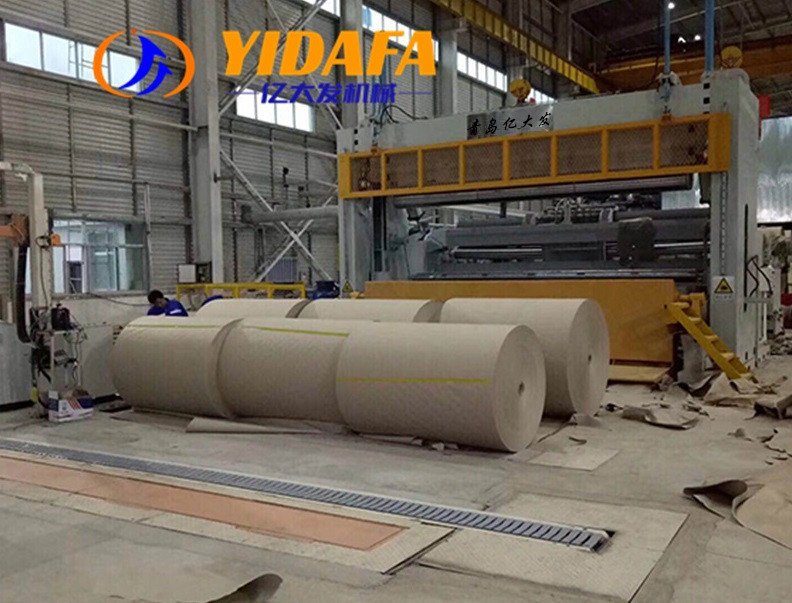The Impact of Technological Development on Paper Industry in Asia

Asia has long been at the forefront of the paper industry, which has undergone significant transformation driven by technological advancements. As the technology continues to evolve,
it has a profound impact on the entire paper pulp making process, revolutionizing the efficiency of paper making machine, sustainability and competitiveness of the paper industry in Asia. Today, the advancement of
digital technology presents an exponential growth trend. It has the characteristics of reshaping the production mode, organization mode, service mode and innovation mode. It has become
the strategic commanding height of the industrial development of various countries and is highly valued by Asian governments.
1.Automation and digitization
One of the most significant advances in the paper industry is the integration of automation and digitalization. Modern paper mills in Asia use advanced machinery and computer control systems
to streamline production processes, reduce human intervention, and improve overall efficiency. Automated systems for pulp preparation, papermaking and finishing enable precise control for
consistent quality and reduced waste.
In addition, digitization has transformed operations by integrating aspects such as supply chain management, inventory control, and real-time data analysis. Smart manufacturing technologies
such as the Internet of Things and artificial intelligence enable real-time monitoring of equipment, predictive maintenance, and data-driven decision-making. These advancements optimize production,
minimize downtime, and increase resource utilization.
2.Sustainable practice
Technology plays a key role in promoting the sustainable development of the paper industry in Asia. Growing environmental concerns have led to the adoption of environmentally friendly practices,
and technological innovations have paved the way for more sustainable production methods.
Today, paper mills have implemented energy saving measures through the use of efficient machinery, optimized processes and advanced control systems. For example, advanced heat recovery systems
capture and reuse energy, significantly reducing the overall energy consumption of the manufacturing process, and emerging technologies are enabling paper manufacturers to minimize waste generation.
Automation and digitization allow precise control of raw materials, reducing overuse and waste. In addition, the advancement of recycling technology has promoted the recycling of waste paper fibers and
promoted the development of circular economy.
For example, water is a critical resource in the paper industry, and technological advances have significantly improved water management practices. Advanced filtration systems, water treatment processes
and closed loop systems minimize water usage and ensure responsible water use.
3.Product Innovation
"Technology is the foundation of the digital enterprise, and the ability to understand its importance and develop strategies to leverage advanced technologies is a hallmark of leading manufacturers," said a
Deloitte report. Technology has driven significant product innovation in the Asian paper industry. Manufacturers have been able to develop new types of papers, coatings and surface treatments to meet the
changing needs of customers and end users.
Advanced technologies enable the production of specialty papers with enhanced properties such as water resistance, durability and printability. These specialty papers are used in packaging, labeling, medical
products and other industries to meet specific requirements. Functional paper technology has facilitated the development of functional papers that embed functions such as antimicrobial properties, RFID tags,
and even electronic components. These papers find applications in fields such as healthcare, logistics and security.
4.Adapt to the market and improve quality
Technological advances have significantly improved the quality of paper produced in Asia. Sophisticated monitoring and control systems can precisely adjust factors such as moisture content, temperature and
pressure to ensure consistent product quality. The introduction of an automatic inspection system ensures that defects and deviations are detected, reducing the occurrence of defective or off-spec paper.
In addition, innovations in paper coating technology have improved printability and durability, broadening the range of applications for paper manufacturers in Asia.
Today, technology has enabled many Asian paper manufacturers to adapt to changing market demands and emerging trends. Digitization enables seamless communication and collaboration with customers,
facilitating customized and personalized product offerings. With the rise of e-commerce and online marketplaces, manufacturers are leveraging technology to expand their distribution channels and thereby
reach a wider customer base. Moreover, real-time data analytics and market intelligence tools enable companies to make informed decisions regarding product development, pricing, and marketing strategies.
The convergence of technologies has significantly enhanced the competitiveness of the Asian paper industry on the global stage. Automation and digitization increase productivity and reduce labor costs.
Today, through this streamlined process, manufacturers can produce paper at a lower unit cost, making them more competitive in the global market.